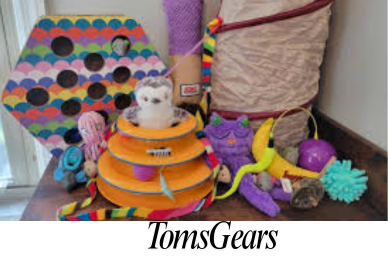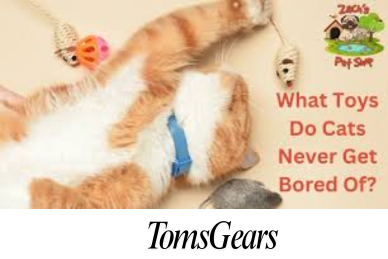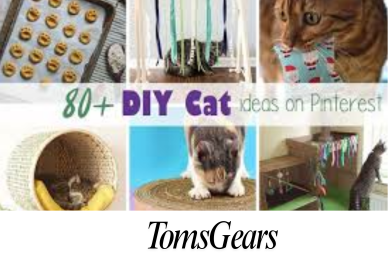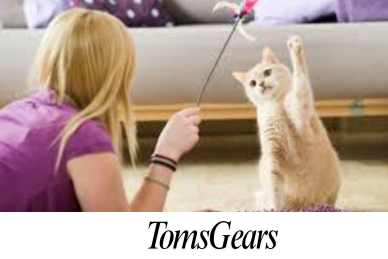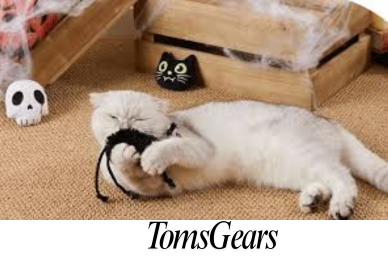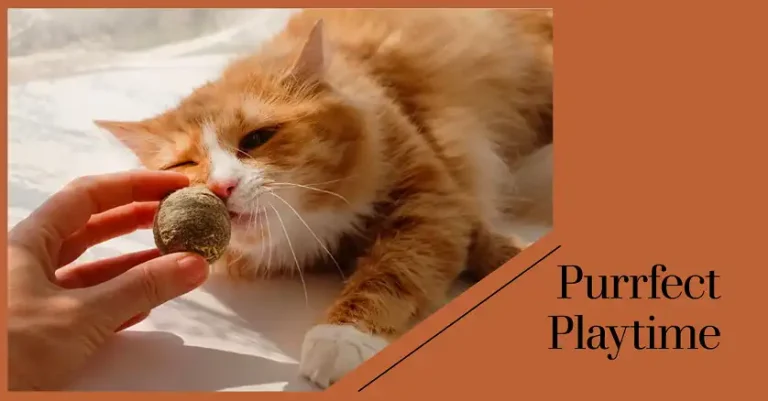Is Crochet Toys Safe for Your Cat?
In recent years, crochet toys for cats have surged in popularity among pet owners. These handmade creations offer a unique blend of charm and personalization that many cat parents find irresistible. However, as with any pet accessory, safety should be your top priority. While these adorable toys may seem like the perfect gift for your feline friend, their playful nature can pose risks if not made with your cat’s well-being in mind.
What Are the Cat Safety Concerns with Crochet Toys
The Dangers of Yarn Ingestion
Cats are naturally drawn to string-like objects, including yarn. This fascination, however, can lead to serious health issues. When cats play with loose yarn, they may accidentally swallow it, leading to potential choking hazards or internal blockages. In severe cases, ingested yarn can cause intestinal damage if it becomes tangled or knotted within the digestive tract.
According to a study by the American Veterinary Medical Association, approximately 30% of foreign body obstructions in cats are caused by string-like objects, including yarn from toys.
Beware of Loose Parts
Small decorative elements like buttons, beads, or bells may add visual appeal to crochet toys, but they pose significant risks. Cats can easily chew these parts off and swallow them, potentially leading to choking or intestinal blockages. Even if not swallowed, these small parts can become lodged in a cat’s throat, causing distress and requiring immediate veterinary attention.
Material Matters
Not all materials are safe for cat toys. Some plastics or treated fabrics used in toy construction can be harmful if ingested. These materials may contain chemicals that can cause digestive upset or more serious health issues in cats.
The Benefits of Crochet Toys for Cats
Despite these concerns, well-made crochet toys can offer numerous benefits for cats:
- Mental Stimulation: Crochet toys can engage your cat’s natural hunting instincts, providing mental enrichment.
- Physical Exercise: Batting, chasing, and pouncing on crochet toys encourage physical activity, helping to maintain a healthy weight.
- Bonding Opportunities: Interactive play with these toys can strengthen the bond between you and your cat.
- Customization: Handmade crochet toys can be tailored to your cat’s preferences in terms of size, shape, and texture.
How to Choose Safe Crochet Toys for Cats
Safe Yarn Options
When selecting or making crochet toys for your cat, the choice of yarn is crucial. Opt for natural fibers like cotton or wool, or high-quality acrylic yarn. These materials are generally safer if ingested in small amounts, though any ingestion should be avoided.
Avoid using “plarn” (plastic yarn made from recycled bags) for cat toys. While eco-friendly, plastic can cause serious digestive issues if swallowed.
Construction Considerations
Look for toys with tight stitches and minimal loose ends. A well-constructed crochet toy should be able to withstand your cat’s claws and teeth without easily unraveling. Choose toys appropriate for your cat’s size and play style – larger, sturdier toys for aggressive players, and smaller, softer ones for gentler cats.
Tips to Make Your Own Safe Crochet Toys
If you’re crafty, making your own cat toys can be a rewarding experience. Here are some tips for creating safe crochet toys:
- Use cat-safe yarns like cotton or acrylic.
- Crochet tightly to prevent gaps where claws or teeth can get caught.
- Consider using techniques like double crochet or working in back loops for added durability.
- Avoid glued-on decorations. Instead, crochet or embroider features directly onto the toy.
- Ensure all ends are securely woven in to prevent unraveling.
How to Properly Care for Crochet Toys
Regular Inspection
Frequently check crochet toys for signs of wear and tear. Look for loose threads, unraveling sections, or missing parts. If you notice any damage, it’s best to discard the toy to prevent potential ingestion of loose materials.
Cleaning Instructions
Keep crochet toys clean to prevent the buildup of bacteria and debris. Washing instructions may vary based on the yarn type:
- Cotton toys: Usually machine washable on a gentle cycle
- Wool toys: Hand wash in cool water with mild soap
- Acrylic toys: Often machine washable, but check the yarn label for specifics
Always dry toys completely before giving them back to your cat.
Proper Storage
When not in use, store crochet toys in a clean, dry place. This helps maintain their shape and cleanliness between play sessions.
Alternatives to Crochet Toys
While crochet toys can be great fun, it’s important to provide your cat with a variety of toy types:
- Interactive wand toys
- Puzzle feeders for mental stimulation
- Catnip-infused toys (for cats that respond to catnip)
- Soft, plush toys without small parts
Offering a range of toys helps keep your cat engaged and prevents boredom.
What Are Signs of Yarn Ingestion in Cats
Be alert for these symptoms, which may indicate your cat has swallowed yarn:
- Vomiting or retching
- Loss of appetite
- Lethargy
- Abdominal pain or swelling
- Constipation or diarrhea
If you notice any of these signs, seek veterinary care immediately.
Wrapping Up
Crochet toys can be a fun and engaging addition to your cat’s toy collection when chosen and used responsibly. By prioritizing safety in material selection, construction, and supervision, you can provide your feline friend with enjoyable playtime while minimizing risks.
Key Takeaways:
- Choose cat-safe materials like cotton or acrylic yarn
- Opt for tightly constructed toys without small, detachable parts
- Regularly inspect and clean crochet toys
- Always supervise playtime
- Provide a variety of toy types for enrichment
Remember to regularly inspect toys, replace them when worn, and always supervise play sessions. With these precautions in mind, both you and your cat can enjoy the unique charm of crochet toys safely.

